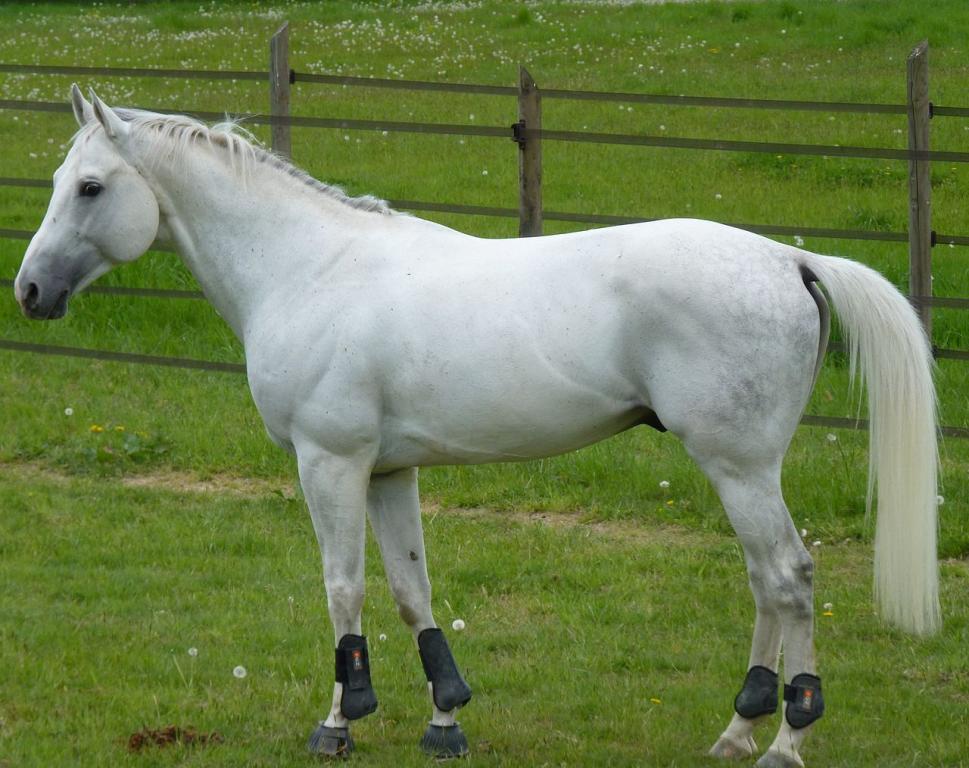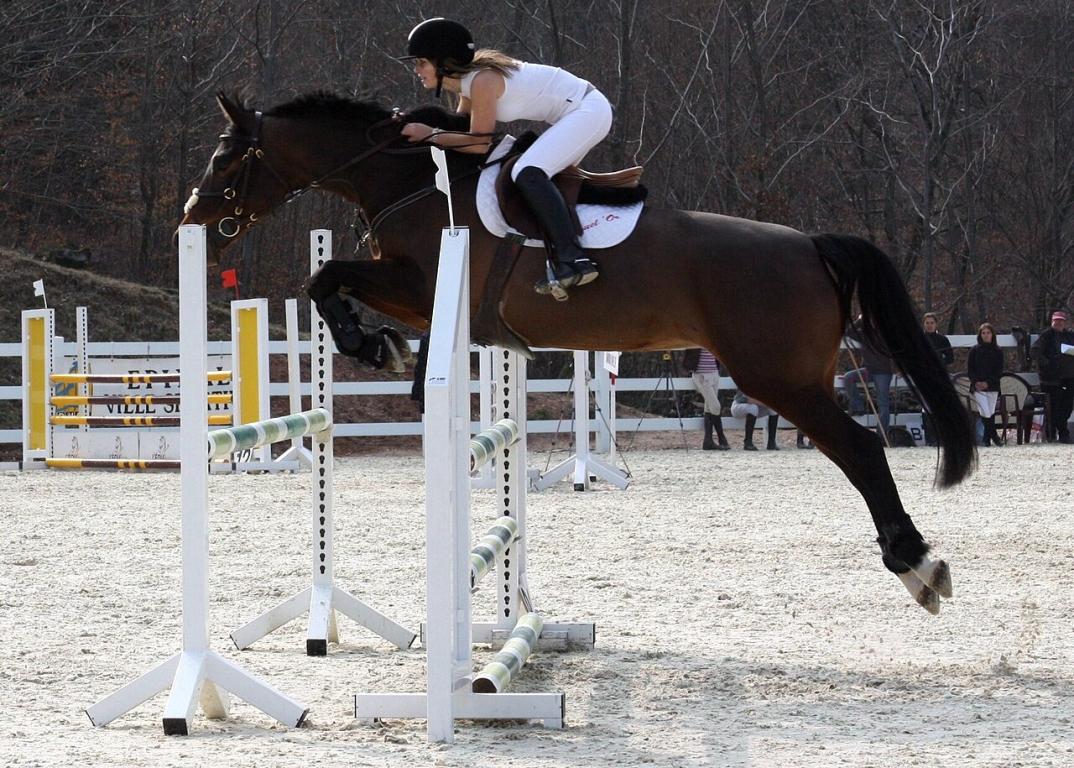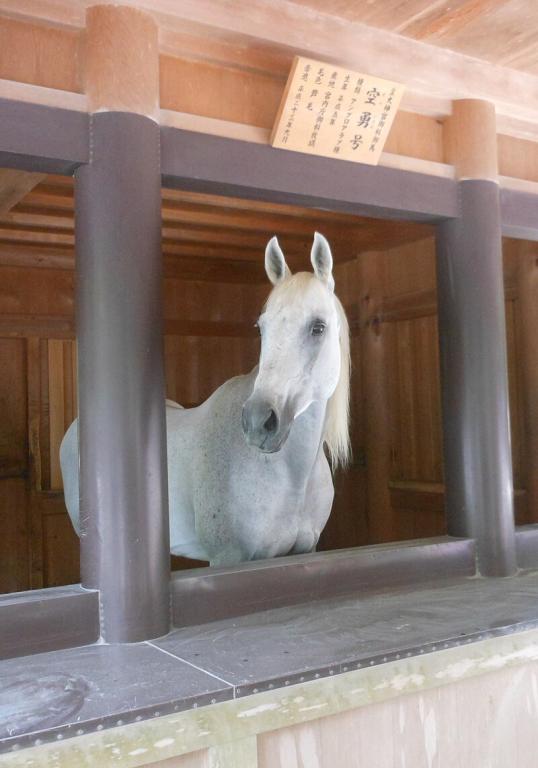
Continent: Europe
Country: France
Weight: 450 – 600 kg
Height: 155 – 170 cm


The Anglo-Arab is a horse breed originating from France, created in the early 19th century in a context where the French army and national stud farms sought to produce a horse that was fast, resilient, and versatile, capable of meeting military, sporting, and civil demands. This breed is the result of strictly regulated crossbreeding between the Arabian Thoroughbred (bringing refinement, endurance, and intelligence) and the English Thoroughbred (known for speed, nervous energy, and racing aptitude).
The first experimental crosses were carried out in major national studs such as Tarbes, Pau, Pompadour, and Cluny, where selection focused on fixing both morphological and functional qualities. The official stud-book was established as early as 1836, making the Anglo-Arab one of the oldest recognized French sport horse breeds. It quickly gained international acclaim, particularly for its performances in eventing, show jumping, and endurance racing.
Traditionally bred in southwestern France, the Anglo-Arab is considered a symbol of French equestrian expertise. It represents a successful synthesis of Eastern nobility and British rigor, resulting in a horse that is elegant, balanced, and naturally suited to competition. Today, its selection is still managed by the Association Nationale de l’Anglo-Arabe (ANAA), under the supervision of the IFCE, following strict genetic, morphological, and health standards, in accordance with the rules of the CIAA (International Anglo-Arab Conference).
Breeding of the Anglo-Arab horse has historically been concentrated in the southwest of France, the birthplace of the breed.
The most emblematic regions include:
-Occitanie, particularly the departments of Gers, Hautes-Pyrénées (Tarbes), Pyrénées-Atlantiques (Pau), Tarn, and Lot, where the oldest bloodlines are still maintained.
-Nouvelle-Aquitaine, notably the Dordogne, Corrèze, and Vienne, near the historic national studs of Pompadour and La Roche-sur-Yon.
These areas offer a mild climate, diverse pastures, and a long-standing equestrian tradition, which have supported the development of thoughtful and sustainable breeding, focused on resilient and athletic horses.
In recent decades, Anglo-Arab breeding has also expanded into other parts of France, including:
-Brittany
-Auvergne-Rhône-Alpes
-Pays de la Loire (La Roche-sur-Yon)
-and more occasionally Normandy, due to its strong equestrian sports network.
At the European level, the Anglo-Arab is also bred in several member countries of the CIAA (International Anglo-Arab Conference), such as Italy, Spain, Poland, and Hungary, where certified breeders maintain and promote the breed in accordance with French breeding standards.
The Anglo-Arab plays a major genetic role in the improvement of many modern sport horse breeds. As the result of a well-balanced cross between Arabian Thoroughbreds and English Thoroughbreds, it combines the hardiness, endurance, longevity, and intelligence of the former with the speed, power, and ground-covering movement of the latter. This hybrid genetic heritage gives the Anglo-Arab both controlled variability and significant added value in selective breeding programs.
The breed is commonly used to:
-Introduce new bloodlines into sport horse populations,
-Enhance canter quality and performance over varied terrain,
-Strengthen bone structure and improve joint soundness,
-Transmit a reliable temperament — willing, sensitive, and hardworking.
Thanks to its balanced genome, the Anglo-Arab avoids some of the typical excesses of overly specialized lines (such as over-sensitiveness, fragility, or excess “blood”). In several countries, the Anglo-Arab has been successfully integrated into breeding schemes aiming to produce high-performance horses for eventing, endurance, or TREC. It has also contributed to the foundation of several regional or complementary types.
Finally, the breed’s genealogy is subject to strict control through its official stud-book and the International Anglo-Arab Conference (CIAA), ensuring reliable traceability, a minimum Arabian blood percentage (≥12.5%), and compliance with international standards.
The Anglo-Arab is one of the oldest French saddle horse breeds, whose origins date back to the first half of the 19th century. It was born out of a state-led project, at a time when France aimed to improve its horse stock for military, civil, and sporting purposes. The goals were clear: to create a horse that was fast, enduring, versatile, and intelligent, by crossing the hot blood of the Arabian Thoroughbred with the more powerful and energetic English Thoroughbred.
Origins and Early Breeding (c. 1800–1850):
Following the Napoleonic Wars, the French army and national stud farms recognized the limitations of local horses, which were often too heavy or lacked stamina for modern cavalry needs. Under the Restoration and the July Monarchy, several state studs — particularly Tarbes, Pau, Pompadour, and Cluny — were mobilized to create a new breed.
Initial crosses were carried out between local or oriental mares and Arabian, then English stallions. The offspring, then known as “half-blood horses,” were carefully monitored and selected, eventually producing the first recognized Anglo-Arabs. The official stud-book was established by royal decree in 1836, making it one of the oldest active horse registries in the world.
Breed Structuring and Expansion (1850–1900):
Throughout the 19th century, the Anglo-Arab gained a national and international reputation. It was valued for its military qualities, especially in light cavalry, and became the horse of choice for officers and military riding schools.
Prominent French equestrian families, such as the Lhoste, Bayard, and Saint-Arroman lineages, played key roles in solidifying the breed. Meanwhile, the state oversaw the stud-book through a rigorous system of identification, pedigree control, and structured reproduction, classifying offspring into sections based on origin — a system that foreshadowed current regulations.
Military and Sporting Golden Age (1900–1950):
The early 20th century marked a golden age for the Anglo-Arab. Widely used during both World Wars for transport, communications, and cavalry duties, it demonstrated remarkable stamina, thriftiness, and toughness in extreme conditions.
The Anglo-Arab also transitioned into a sport horse, particularly in military riding competitions, the forerunners of today’s eventing. From the 1930s to the 1950s, international eventing competitions (CCI) saw Anglo-Arabs excel at the European level, often ridden by elite military officers in both France and abroad.
Reinvention in Civil Sport (1950–1990):
After WWII, as cavalry use declined due to motorization, the Anglo-Arab lost prominence but found a new role in civilian equestrian sport.
From the 1960s onward, it proved highly successful in eventing, endurance, and show jumping, thanks to its versatility and reliable temperament. The Tarbes stud farm became a hub for modern breeding, with stallions such as Nithard, Fandango, and Furioso AA leaving a lasting impact on the breed.
In 1970, the International Anglo-Arab Conference (CIAA) was established to harmonize stud-book standards between countries like France, Spain, Italy, and Hungary, reinforcing the breed’s international status.
Reorganization and Repositioning (1990–2020):
With the growing dominance of warmbloods (KWPN, Holsteiner, BWP…) in international sport, the Anglo-Arab saw a drop in numbers. Yet the breed endured, supported by dedicated breeders and local networks.
In 2001, the National Anglo-Arab Association (ANAA) was founded and officially recognized as the breeding authority, taking over from the state. The stud-book was modernized, with clearer section divisions (I, II, III), and the minimum required Arabian blood content (12.5%) was preserved. The Anglo-Arab was repositioned as a versatile sport horse, a high-end leisure horse, and an improver breed for others.
Today and Tomorrow: A Balanced and Promising Breed:
As of 2025, the Anglo-Arab remains a living part of France’s equestrian heritage, supported by an active stud-book, a well-defined breeding program, and strict health regulations. It is increasingly sought after for disciplines such as TREC, endurance, amateur eventing, and as a premium instructional horse.
In a world where breeders seek sustainable, low-maintenance, and adaptable horses, the Anglo-Arab stands out as a model of equestrian resilience. Thanks to the joint efforts of ANAA, IFCE, and dedicated breeders, the breed continues to evolve while preserving its noble identity, prestigious origins, and cultural value.
The Anglo-Arab has a lively, intelligent, and well-balanced temperament, inherited from its crossbred origins between the Arabian and English Thoroughbreds. It is known for its sensitivity, strong learning ability, and eagerness to cooperate with its rider.
As a true hot-blooded horse, it naturally displays energy and drive, sometimes exuberant in young individuals or those with strong Thoroughbred influence, yet it remains manageable with consistent and appropriate training. Its liveliness does not equate to nervousness: when properly handled, it shows honesty, loyalty, and respect toward humans.
The Anglo-Arab is also recognized for its mental versatility. It excels in technical disciplines (such as dressage, jumping, TREC), handles fatigue well (especially in endurance), and adapts to varied environments. Its mental resilience and emotional recovery make it a reliable partner both in competition and out on the trail.
Generous and courageous—though sometimes sensitive or even a bit proud—it requires a calm, consistent rider capable of channeling its energy without suppressing it. When understood and respected, the Anglo-Arab becomes a devoted, high-performing, and elegant partner, appreciated by both skilled amateurs and professionals alike.
The Anglo-Arab breed is currently undergoing a progressive revival, supported by growing recognition of its sporting, mental, and genetic qualities. Long overshadowed by the rise of European warmblood horses (such as Selle Français, Holsteiner, KWPN), the Anglo-Arab is regaining interest in disciplines such as eventing, endurance, TREC, and even show jumping, where its natural versatility, lightness, and stamina are key assets.
French breeders, with the backing of the ANAA and IFCE, are focusing on strict genealogical selection and promoting high-performing bloodlines, both in terms of sport and reproduction. The stud-book also allows for strategic crossbreeding (within sections II and III) to expand the genetic base without compromising the breed’s identity.
At the international level, the Anglo-Arab benefits from the support of the CIAA (International Anglo-Arab Conference), which works to harmonize selection criteria and increase the breed's visibility within European stud-books. Exchanges are ongoing with several Central and Southern European countries to strengthen breeding efforts beyond France, while preserving the French lineage as a reference.
Finally, in a context where breeders seek more rustic, efficient, and climate-resilient horses, the Anglo-Arab stands out for its low feed requirements, resistance to effort, and adaptability, making it a promising breed for the future — both for leisure riding and a wide range of competitive disciplines.
The Anglo-Arab is generally considered a robust and healthy breed, benefiting from a diverse genetic background thanks to the balance between Arabian and Thoroughbred lines. Historically selected for its stamina, longevity, and quick recovery, the breed presents few breed-specific health issues.
However, like all hot-blooded horses, some individuals may show:
-Gastric sensitivity, with a moderate risk of ulcers in cases of stress, poor diet, or sudden changes in workload;
-Fine bone structure in individuals with a strong Thoroughbred type, which can lead to injury risks if training is excessive or poorly adapted;
-A sensitive temperament, requiring careful management to prevent stress-related behavioral issues (such as weaving, cribbing, or weight loss).
From a genetic standpoint, no major hereditary disorders are currently associated with the Anglo-Arab in the official databases (IFCE, SIRE, CIAA). Nonetheless, the stud-book requires DNA parentage verification, mandatory health screenings for breeding animals (such as equine infectious anemia, viral arteritis, contagious metritis, equine influenza), and strict traceability of ancestry to prevent the spread of any genetic diseases.
Finally, the Anglo-Arab often enjoys excellent physical recovery, sound hooves, and a remarkable sporting longevity, often remaining active and competitive well beyond the age of 15 in demanding disciplines such as endurance or TREC.
A regular, supple, marching gait with good amplitude. The Anglo-Arab’s walk is clear, free, and active, reflecting its mental responsiveness and natural balance.
A light, energetic, and well-suspended trot with excellent impulsion from the hindquarters. Often highly expressive in Arabian-type individuals, showing good diagonal coordination.
A smooth, rhythmic, uphill canter with natural balance. Highly appreciated in eventing and cross-country, the Anglo-Arab’s canter is long-striding and easily collected.
Born on 01/01/1946
One of the most influential founding stallions of the breed, sire of many top-level eventing horses. Left a lasting mark on French breeding thanks to the quality of his offspring — known for their mentality, movement, and endurance.
Born on 01/01/1965
Successful in eventing and a key sire during the 1970s and 1980s. Passed on energetic gaits, good balance, and a strong competitive spirit. Prominent in many modern Anglo-Arab bloodlines.
Born on 01/01/1985
International eventing winner under Jean-Lou Bigot. Competed in the 1992 Barcelona Olympic Games and secured numerous podium finishes in CCI* competitions.
Born on 01/01/2010
European Junior Eventing Champion in 2017. Regularly placed in international CCI2 and CCI3** events. A son of Ténor de la Cour, he represents the continuity of the Anglo-Arab sport lineage.

Through these beautiful testimonies and images, (re)discover the Anglo-Arab breed, a versatile racehorse.

"Beyond the competition, it's important to try to do well and respect them" Meeting Yoann SENUT who presented LOLIPOP DE GAYOT AA on the occasion of the International Anglo-Arab Days France - ANAA 🐴🇫🇷 😊 Transcription

Discover the history, missions, and actions of the ANAA (National Anglo-Arab Association) presented by Alain James, president of the association.